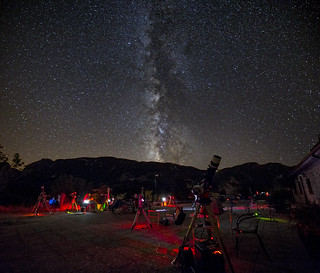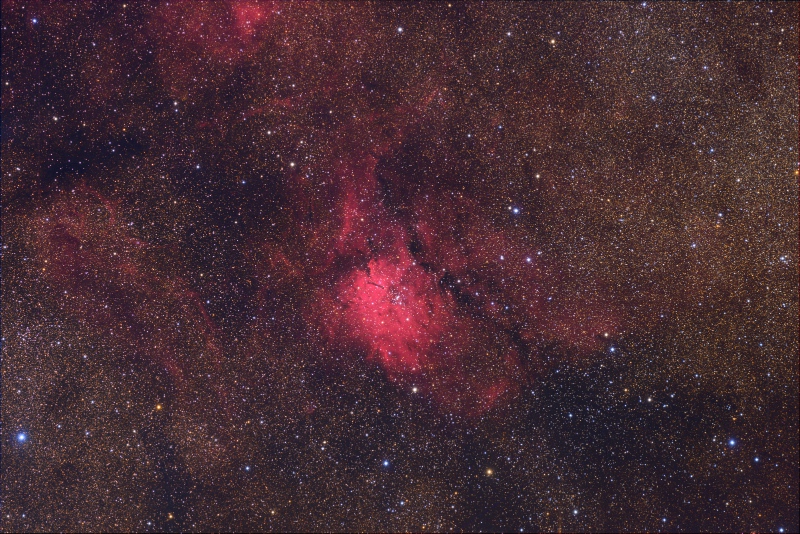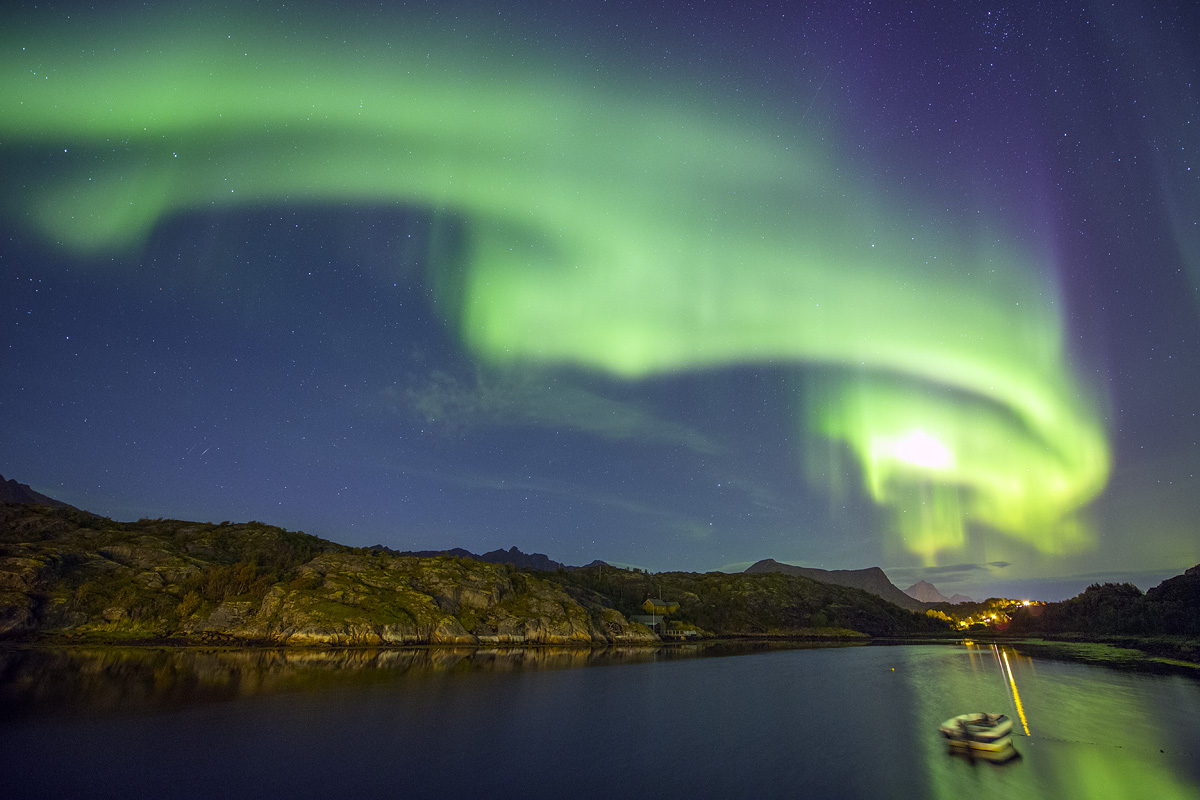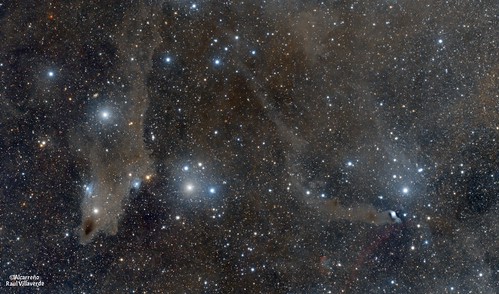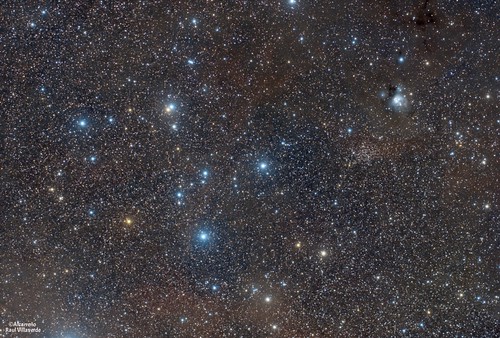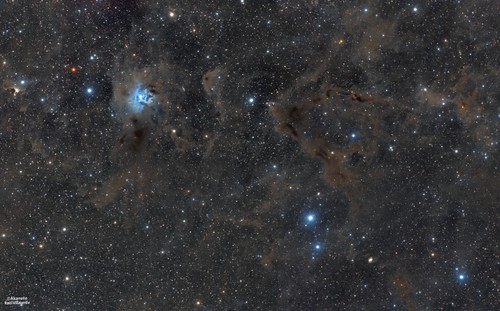Submissions: 2016 August
Submissions: 2016 August
__________________________________________________________________________________________________
Please post your images here.
Please see this thread before posting images; posting images demonstrates your agreement with
the possible uses for your image.
If hotlinking to an image, please ensure it is under 400K.
Hotlinks to images over 400K slow down the thread too much and will be disabled.
Thank you!
_________________________________________________________________________________________________
<- Previous submissions
[c]«« Discuss Anything in Astronomy «» Visit The Asterisk Main Page «» See Introductory Astonomy Lectures »»
«« Introduce Yourself «» Please Read the Rules »»[/c]
Please post your images here.
Please see this thread before posting images; posting images demonstrates your agreement with
the possible uses for your image.
If hotlinking to an image, please ensure it is under 400K.
Hotlinks to images over 400K slow down the thread too much and will be disabled.
Thank you!
_________________________________________________________________________________________________
<- Previous submissions
[c]«« Discuss Anything in Astronomy «» Visit The Asterisk Main Page «» See Introductory Astonomy Lectures »»
«« Introduce Yourself «» Please Read the Rules »»[/c]
-
vanamonde81
- Science Officer
- Posts: 142
- Joined: Fri Apr 12, 2013 7:46 am
Re: Submissions: 2016 August
The Rising Milky Way at Lake Balaton
Copyright: György Soponyai
Balaton, the largest lake in Central Europe is a popular tourist destination in Hungary. Three weeks ago I spent a weekend in Balatonakali, a village at the northern shore of the Lake to do some camping and I found this small fishing pier facing to South direction. Without my photo equipment I was able only admire the scene but then I decided that sooner or later I would return to capture it with my camera. Two days ago the time came finally..:

Photo details:
2016.07.30. Balatonakali, Hungary
Canon EOS 5D Mark II + Sigma EF 8/4.0
6 x 30s, F4.0, ISO3200
Copyright: György Soponyai
Balaton, the largest lake in Central Europe is a popular tourist destination in Hungary. Three weeks ago I spent a weekend in Balatonakali, a village at the northern shore of the Lake to do some camping and I found this small fishing pier facing to South direction. Without my photo equipment I was able only admire the scene but then I decided that sooner or later I would return to capture it with my camera. Two days ago the time came finally..:

Photo details:
2016.07.30. Balatonakali, Hungary
Canon EOS 5D Mark II + Sigma EF 8/4.0
6 x 30s, F4.0, ISO3200
Re: Submissions: 2016 August
East Veil Nebula (NGC6992, NGC6995, IC1430)
Copyright: Sebastiano Recupero
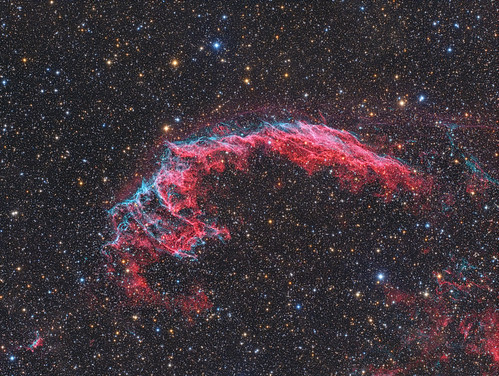
Image details:
Telescope: Takahashi FSQ-106EDX3
Camera: QSI 683 wsg8
Filters: Astrodon Gen2 E-Series LRGB
Integration: LRGB --> 16:8:9:8 x 600s
Total: 6h 50m
Telescope: Takahashi FS102 f/6
Camera: Moravian G2-8300
Filter: Baader H-alpha 7nm
Integration: 11 x 1500s
Total: 4h 25m
H-alpha data and blending into LRGB by Piermario Gualdoni.
Full resolution: https://c1.staticflickr.com/9/8309/2859 ... 56f2_o.jpg
Copyright: Sebastiano Recupero

Image details:
Telescope: Takahashi FSQ-106EDX3
Camera: QSI 683 wsg8
Filters: Astrodon Gen2 E-Series LRGB
Integration: LRGB --> 16:8:9:8 x 600s
Total: 6h 50m
Telescope: Takahashi FS102 f/6
Camera: Moravian G2-8300
Filter: Baader H-alpha 7nm
Integration: 11 x 1500s
Total: 4h 25m
H-alpha data and blending into LRGB by Piermario Gualdoni.
Full resolution: https://c1.staticflickr.com/9/8309/2859 ... 56f2_o.jpg
Last edited by mesone on Tue Aug 02, 2016 3:11 am, edited 4 times in total.
Re: Submissions: 2016 August
IRAS 16069-4858 is a fairly small and dim ionized region located just up from the centre of the image. It measures about 6.1' X 2.0' across.
The star near the top, and located on the ionized structure is TYC 8319-650-1. Just below that is a little crescent structure G332.9565+01.8035 1 which is a young stellar object candidate. To find it, look for a small dark area with a horizontal line running through it..
The star near the top, and located on the ionized structure is TYC 8319-650-1. Just below that is a little crescent structure G332.9565+01.8035 1 which is a young stellar object candidate. To find it, look for a small dark area with a horizontal line running through it.
Personally, I like the lower left part of the image. With a bit of imagination and our friend pareidolia, I picture something that resembles a sea gull taking flight to get away from that angry ionised region in space.
 IRAS 16069-4858 by Terry Robison, on Flickr
IRAS 16069-4858 by Terry Robison, on Flickr
Instruments Used:
Telescope ......... 10RC
Camera ............ STL-11000
Mount ............. AP900
Filter ............ Baader Ha
Image Details:
Resolution ........ 0.804 arcsec/pix
Rotation .......... -19.224 deg
Focal ............. 2309.84 mm
Pixel size ........ 9.00 um
Field of view ..... 26' 15.2" x 16' 38.2"
Sub details ....... 22 X 1800 sec - Ha
Location .......... Melbourne, Australia
Image processing with CCDStack and Photoshop.
Terry
The star near the top, and located on the ionized structure is TYC 8319-650-1. Just below that is a little crescent structure G332.9565+01.8035 1 which is a young stellar object candidate. To find it, look for a small dark area with a horizontal line running through it..
The star near the top, and located on the ionized structure is TYC 8319-650-1. Just below that is a little crescent structure G332.9565+01.8035 1 which is a young stellar object candidate. To find it, look for a small dark area with a horizontal line running through it.
Personally, I like the lower left part of the image. With a bit of imagination and our friend pareidolia, I picture something that resembles a sea gull taking flight to get away from that angry ionised region in space.
 IRAS 16069-4858 by Terry Robison, on Flickr
IRAS 16069-4858 by Terry Robison, on FlickrInstruments Used:
Telescope ......... 10RC
Camera ............ STL-11000
Mount ............. AP900
Filter ............ Baader Ha
Image Details:
Resolution ........ 0.804 arcsec/pix
Rotation .......... -19.224 deg
Focal ............. 2309.84 mm
Pixel size ........ 9.00 um
Field of view ..... 26' 15.2" x 16' 38.2"
Sub details ....... 22 X 1800 sec - Ha
Location .......... Melbourne, Australia
Image processing with CCDStack and Photoshop.
Terry
Collecting Photons.....
Images Gallery
https://www.astrobin.com/users/trobison/
https://www.flickr.com/photos/97807083@ ... 6565068452
Images Gallery
https://www.astrobin.com/users/trobison/
https://www.flickr.com/photos/97807083@ ... 6565068452
Re: Submissions: 2016 August
The Heart Nebula, The Fish-head Nebula, and a small Planetary Nebula : WeBo 1
Copyright: Nicolas Kizilian
http://astro.kizix.org
Full resolution : http://kizix.org/files/public-docs/hear ... ian-10.jpg
Copyright: Nicolas Kizilian
http://astro.kizix.org
Full resolution : http://kizix.org/files/public-docs/hear ... ian-10.jpg
Re: Submissions: 2016 August
Perseids over the Kolonica Saddle
Copyright: Petr Horálek
This year the annual Perseid meteor shower should be more interesting as there is prediction for higher meteor frequencies as usual (see http://www.imo.net). However unlike last year, the maximum of the shower will be partially disturbed by the moonlit (in the first half of maximum night). So it is better to enjoy the shower days before, especially from August 8th.
This image was made during last year Perseids peak, showing myself under the Slovakian sky of Poloniny dark sky park (https://en.wikipedia.org/wiki/Poloniny_Dark-Sky_Park). It is composition image, where you can count 174 Persed, which I captured in a week around the peak of Perseid activity 2015 (as well as the foreground) and mathematically stacked all together. More info and image in higher resolution you can find here: http://www.astronom.cz/horalek/?p=1700.
Copyright: Petr Horálek
This year the annual Perseid meteor shower should be more interesting as there is prediction for higher meteor frequencies as usual (see http://www.imo.net). However unlike last year, the maximum of the shower will be partially disturbed by the moonlit (in the first half of maximum night). So it is better to enjoy the shower days before, especially from August 8th.
This image was made during last year Perseids peak, showing myself under the Slovakian sky of Poloniny dark sky park (https://en.wikipedia.org/wiki/Poloniny_Dark-Sky_Park). It is composition image, where you can count 174 Persed, which I captured in a week around the peak of Perseid activity 2015 (as well as the foreground) and mathematically stacked all together. More info and image in higher resolution you can find here: http://www.astronom.cz/horalek/?p=1700.
-
aldomottino
- Ensign
- Posts: 75
- Joined: Fri Dec 23, 2011 11:08 pm
Details on Horsehead Nebula
Image credits and copyright: H-alpha: KPNO 4.0 M telescope (NOAO/AURA/NSF); color: 1.5 M telescope (EABA/UNC); processing: Kfir Simon, Carlos Colazo, Aldo Mottino.
Last edited by aldomottino on Tue Aug 02, 2016 12:52 am, edited 1 time in total.
Re: Submissions: 2016 August
Venus' Evening Tour 2000-2001
After nearly 3 months of absence behind the Sun's glare, Venus is slowly creeping out of the evening twilight day by day. It will be shining in the western sky as the Evening Star for the next 8 months until it will be passing through inferior conjunction on 23-25 March 2017. This coming evening apparition of Venus until March 2017 will be very similar to the one in 2008-2009, and also 2000-2001.
http://antwrp.gsfc.nasa.gov/apod/ap010601.html
How is this possible? Because Sun-Venus-Earth configurations repeat after every 8 days, as 13 Venus years very nearly equal 8 Earth years. This composite picture shows the motion of Venus for nearly all of its evening apparition back in 2000-2001, as seen from the terrace rooftop of the Physics Department of Middle East Technical University in Ankara, Turkey.
This breed of long term celestial motion photography involves a camera to be set up at a fixed spot, looking at the western sky. With Venus starting to appear after superior conjunction, photograph of the planet is taken every week or so, when the Sun is certain degrees below the horizon. For aesthetic reasons, I had chosen to take pictures when the Sun was 7 degrees below. Photography continues for about 7~8 months until Venus is lost into inferior conjunction.
Tunç Tezel
http://antwrp.gsfc.nasa.gov/apod/ap010601.html
How is this possible? Because Sun-Venus-Earth configurations repeat after every 8 days, as 13 Venus years very nearly equal 8 Earth years. This composite picture shows the motion of Venus for nearly all of its evening apparition back in 2000-2001, as seen from the terrace rooftop of the Physics Department of Middle East Technical University in Ankara, Turkey.
This breed of long term celestial motion photography involves a camera to be set up at a fixed spot, looking at the western sky. With Venus starting to appear after superior conjunction, photograph of the planet is taken every week or so, when the Sun is certain degrees below the horizon. For aesthetic reasons, I had chosen to take pictures when the Sun was 7 degrees below. Photography continues for about 7~8 months until Venus is lost into inferior conjunction.
Tunç Tezel
-
astrometbcn
- Ensign
- Posts: 67
- Joined: Tue Feb 23, 2016 8:26 am
Re: Submissions: 2016 August
Galactic Restaurant
https://www.facebook.com/jose.jimenezjj
Copyright: José Jiménez Priego
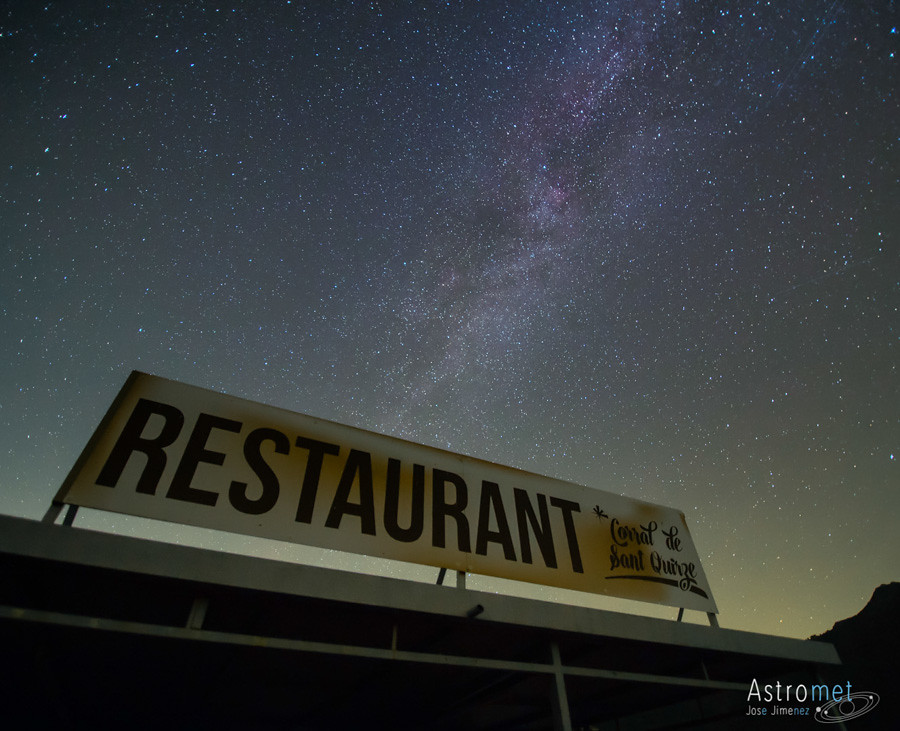
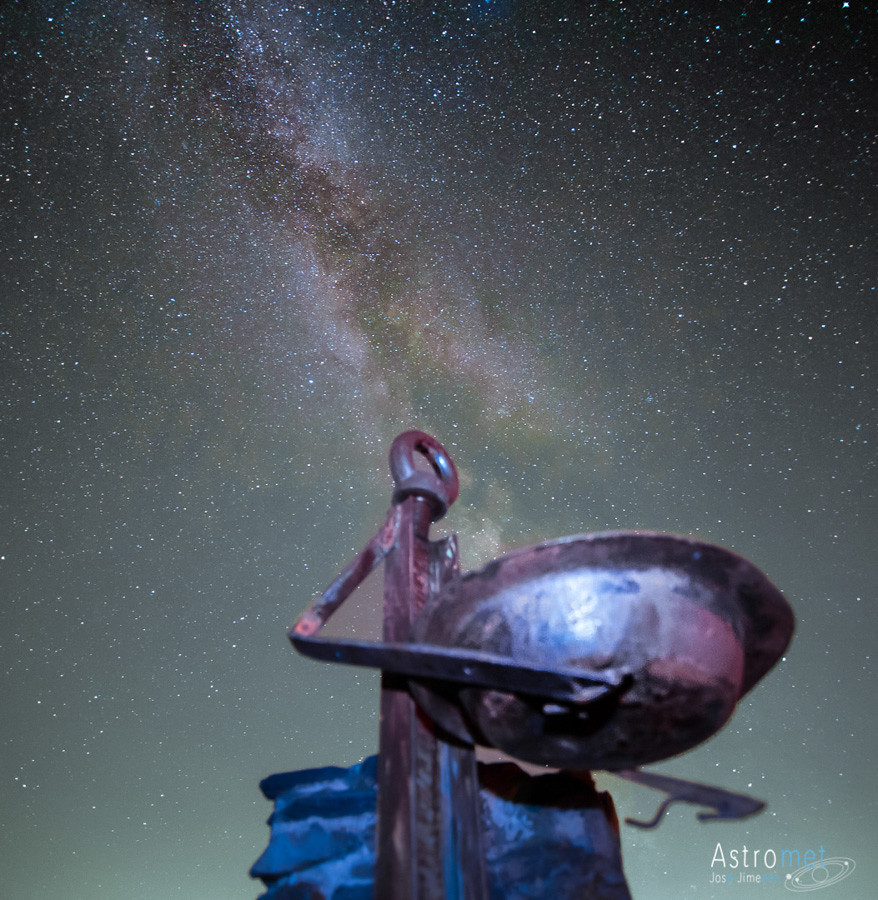
https://500px.com/astromet/galleries
https://www.flickr.com/photos/21144055@N04/albums
https://twitter.com/JJastromet
https://www.facebook.com/jose.jimenezjj
Copyright: José Jiménez Priego


https://500px.com/astromet/galleries
https://www.flickr.com/photos/21144055@N04/albums
https://twitter.com/JJastromet
Re: Submissions: 2016 August
Northern Lights 03.august.2016
Copyright: Märt Varatu New season of Aurora Borealis started in Estonia.
Copyright: Märt Varatu New season of Aurora Borealis started in Estonia.
-
j.s.ebersole@gmail.com
Re: Submissions: 2016 August
M8 Lagoon Nebula Core
http://jebersol.zenfolio.com/
Copyright: John Ebersole Narrowband, emission line imaging (HST palette) provides striking structural detail and color contrast in this close-up image of the core of M8, the Lagoon Nebula.
http://jebersol.zenfolio.com/
Copyright: John Ebersole Narrowband, emission line imaging (HST palette) provides striking structural detail and color contrast in this close-up image of the core of M8, the Lagoon Nebula.
Re: Submissions: 2016 August
NGC6820,6823 region
http://www.astromarcin.pl
Copyright: MArcin PAciorek Better res: http://www.astromarcin.pl/images/nebula ... 2000v2.jpg
http://www.astromarcin.pl
Copyright: MArcin PAciorek Better res: http://www.astromarcin.pl/images/nebula ... 2000v2.jpg
Re: Submissions: 2016 August
Caldwell 33 - Eastern Veil - a different palette.
Narrow band imaging offers a chance to bring out the details in a variety of palettes - like this one where OHS = RGB
Full resolution & info available @ http://www.kinchastro.com/caldwell-33.html
Narrow band imaging offers a chance to bring out the details in a variety of palettes - like this one where OHS = RGB
Full resolution & info available @ http://www.kinchastro.com/caldwell-33.html
Re: Submissions: 2016 August
Eta Carinae Nebulae (NGC 3372) Widefield Version, June 2011, Namibia
http://www.sternklar.ch/images-webpages ... uni-11.htm
Copyright: Manuel Jung, http://www.sternklar.ch
http://www.sternklar.ch/images-webpages ... uni-11.htm
Copyright: Manuel Jung, http://www.sternklar.ch
-
Paul Haese
- Ensign
- Posts: 80
- Joined: Tue Feb 01, 2011 10:38 pm
-
Paul Haese
- Ensign
- Posts: 80
- Joined: Tue Feb 01, 2011 10:38 pm
Re: Submissions: 2016 August
Near and Far
Capturing NGC6752, the third brightest globular cluster in the sky, also the devils mask and some IFN.
Copyright: Paul Haese
Click here for larger resolution image.
Capturing NGC6752, the third brightest globular cluster in the sky, also the devils mask and some IFN.
Copyright: Paul Haese
Click here for larger resolution image.
- AlexMaragos
- Ensign
- Posts: 83
- Joined: Tue Jan 04, 2011 4:02 pm
- AKA: Alexandros Maragos
- Location: In transit
- Contact:
Re: Submissions: 2016 August
A friendly couple gazing the Milky Way over Kefalonia island
at the southern tip of Lefkada island, Greece on August 02, 2016.
http://www.alexandrosmaragos.com
Copyright: Alexandros Maragos
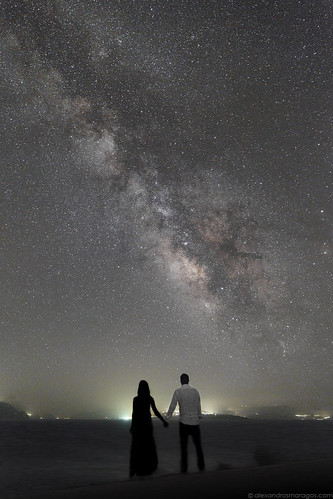
Couple gazing the Milky Way by Alexandros Maragos, on Flickr
at the southern tip of Lefkada island, Greece on August 02, 2016.
http://www.alexandrosmaragos.com
Copyright: Alexandros Maragos

Couple gazing the Milky Way by Alexandros Maragos, on Flickr
-
Bi2L
- Science Officer
- Posts: 103
- Joined: Tue Jul 19, 2011 11:24 am
- AKA: Bill Metallinos
- Location: Corfu, Greece
- Contact:
Re: Submissions: 2016 August
Into the constellation of Sagittarius - Milkyway
From the 10th National Annual Star Party of Greek Amateur Astronomers at mountain Parnon.
Special thanks to the Astronomical Union of Sparta!
text wikipedia https://en.wikipedia.org/wiki/Sagittari ... tellation)
Sagittarius is one of the constellations of the zodiac. It is one of the 48 constellations listed by the 2nd-century astronomer Ptolemy and remains one of the 88 modern constellations. Its name is Latin for the archer, and its symbol is Sagittarius.svg (Unicode U+2650 ), a stylized arrow. Sagittarius is commonly represented as a centaur pulling-back a bow. It lies between Scorpius and Ophiuchus to the west and Capricornus to the east.
), a stylized arrow. Sagittarius is commonly represented as a centaur pulling-back a bow. It lies between Scorpius and Ophiuchus to the west and Capricornus to the east.
The center of the Milky Way lies in the westernmost part of Sagittarius.
As seen from the northern hemisphere, the constellation's brighter stars form an easily recognizable asterism known as 'the Teapot'. The stars δ Sgr (Kaus Media), ε Sgr (Kaus Australis), ζ Sgr (Ascella), and φ Sgr form the body of the pot; λ Sgr (Kaus Borealis) is the point of the lid; γ2 Sgr (Alnasl) is the tip of the spout; and σ Sgr (Nunki) and τ Sgr the handle. These same stars originally formed the bow and arrow of Sagittarius.
Marking the bottom of the teapot's "handle" (or the shoulder area of the archer, are the bright star (2.59 magnitude) Zeta Sagittarii (ζ Sgr), named Ascella, and the fainter Tau Sagittarii (τ Sgr).
To complete the teapot metaphor, under good conditions, a particularly dense area of the Milky Way can be seen rising in a north-westerly arc above the spout, like a puff of steam rising from a boiling kettle.
The Milky Way is at its densest near Sagittarius, as this is where the galactic center lies. As a result, Sagittarius contains many star clusters and nebulae.
Nebulae
Sagittarius contains several well-known nebulae, including the Lagoon Nebula (Messier 8), near λ Sagittarii; the Omega Nebula (Messier 17), also known as the Horseshoe Nebula or Swan Nebula, near the border with Scutum; and the Trifid Nebula (Messier 20), a large nebula containing some very young, hot stars.
The Lagoon Nebula (M8) is an emission nebula that is located 5,000 light-years from Earth and measures 140 light-years by 60 light-years (1.5°). Though it appears grey in telescopes to the unaided eye, long-exposure photographs reveal its pink hue, common to emission nebulae.[8] It is fairly bright, with an integrated magnitude of 3.0. The Lagoon Nebula was discovered independently by John Flamsteed in 1680, Guillaume Le Gentil in 1747, and Charles Messier in 1764. The central area of the Lagoon Nebula is also known as the Hourglass Nebula, so named for its distinctive shape.
The Hourglass Nebula has its shape because of matter propelled by Herschel 36. The Lagoon Nebula also features three dark nebulae catalogued in Barnard's Catalog. The Lagoon Nebula was instrumental in the discovery of Bok globules, as Bart Bok studied prints of the nebula intensively in 1947. Approximately 17,000 Bok globules were discovered in the nebula nine years later as a part of the Palomar Sky Survey; studies later showed that Bok's hypothesis that the globules held protostars was correct.
The Omega Nebula is a fairly bright nebula; it has an integrated magnitude of 6.0 and is 4890 light-years from Earth. It was discovered in 1746 by Philippe Loys de Chésaux; observers since him have differed greatly in how they view the nebula, hence its myriad of names. Most often viewed as a checkmark, it was seen as a swan by George F. Chambers in 1889, a loon by Roy Bishop, and as a curl of smoke by Camille Flammarion.
The Trifid Nebula (M20, NGC 6514) is an emission nebula in Sagittarius that lies less than two degrees from the Lagoon Nebula. Discovered by French comet-hunter Charles Messier, it is located between 2,000 and 9,000 light-years from Earth and has a diameter of approximately 50 light-years. The outside of the Trifid Nebula is a bluish reflection nebula; the interior is pink with two dark bands that divide it into three areas, sometimes called "lobes". Hydrogen in the nebula is ionized, creating its characteristic color, by a central triple star, which formed in the intersection of the two dark bands. M20 is associated with a cluster that has a magnitude of 6.3.
The Red Spider Nebula (NGC 6537) is a planetary nebula located at a distance of about 4000 light-years from Earth.
NGC 6559 is a star forming region located at a distance of about 5000 light-years from Earth, in the constellation of Sagittarius, showing both emission (red) and reflection (bluish) regions.
The grouping of the Lagoon Nebula, the Trifid Nebula, and NGC 6559 is often called the Sagittarius triplet.
In addition, several other nebulae have been located within Sagittarius and are of interest to astronomers.
M24, also called the Small Sagittarius Star Cloud, is a star cluster with an approximate magnitude of 3. About 9400 light-years away, it has a diameter of approximately 330 light-years. Embedded in M24 is NGC 6603, a smaller star cluster that is very dense. NGC 6567, a dim planetary nebula, and Barnard 92, a Bok globule, are also nearby.
NGC 6445 is a planetary nebula with an approximate magnitude of 11. A large nebula at over one arcminute in diameter, it appears very close to the globular cluster NGC 6440.
NGC 6638 is a dimmer globular at magnitude 9.2, though it is more distant than M71 at a distance of 26,000 light-years. It is a Shapley class VI cluster; the classification means that it has intermediate concentration at its core. It is approximately a degree away from the brighter globulars M22 and M28; NGC 6638 is southeast and southwest of the clusters respectively.
Canon eos 6D, EF 85 f1.2 LII, 85mm, f/2.8, iso800, 6X3min, Skywatcher EQ6, Unguide, DSS, PS
From the 10th National Annual Star Party of Greek Amateur Astronomers at mountain Parnon.
Special thanks to the Astronomical Union of Sparta!
text wikipedia https://en.wikipedia.org/wiki/Sagittari ... tellation)
Sagittarius is one of the constellations of the zodiac. It is one of the 48 constellations listed by the 2nd-century astronomer Ptolemy and remains one of the 88 modern constellations. Its name is Latin for the archer, and its symbol is Sagittarius.svg (Unicode U+2650
The center of the Milky Way lies in the westernmost part of Sagittarius.
As seen from the northern hemisphere, the constellation's brighter stars form an easily recognizable asterism known as 'the Teapot'. The stars δ Sgr (Kaus Media), ε Sgr (Kaus Australis), ζ Sgr (Ascella), and φ Sgr form the body of the pot; λ Sgr (Kaus Borealis) is the point of the lid; γ2 Sgr (Alnasl) is the tip of the spout; and σ Sgr (Nunki) and τ Sgr the handle. These same stars originally formed the bow and arrow of Sagittarius.
Marking the bottom of the teapot's "handle" (or the shoulder area of the archer, are the bright star (2.59 magnitude) Zeta Sagittarii (ζ Sgr), named Ascella, and the fainter Tau Sagittarii (τ Sgr).
To complete the teapot metaphor, under good conditions, a particularly dense area of the Milky Way can be seen rising in a north-westerly arc above the spout, like a puff of steam rising from a boiling kettle.
The Milky Way is at its densest near Sagittarius, as this is where the galactic center lies. As a result, Sagittarius contains many star clusters and nebulae.
Nebulae
Sagittarius contains several well-known nebulae, including the Lagoon Nebula (Messier 8), near λ Sagittarii; the Omega Nebula (Messier 17), also known as the Horseshoe Nebula or Swan Nebula, near the border with Scutum; and the Trifid Nebula (Messier 20), a large nebula containing some very young, hot stars.
The Lagoon Nebula (M8) is an emission nebula that is located 5,000 light-years from Earth and measures 140 light-years by 60 light-years (1.5°). Though it appears grey in telescopes to the unaided eye, long-exposure photographs reveal its pink hue, common to emission nebulae.[8] It is fairly bright, with an integrated magnitude of 3.0. The Lagoon Nebula was discovered independently by John Flamsteed in 1680, Guillaume Le Gentil in 1747, and Charles Messier in 1764. The central area of the Lagoon Nebula is also known as the Hourglass Nebula, so named for its distinctive shape.
The Hourglass Nebula has its shape because of matter propelled by Herschel 36. The Lagoon Nebula also features three dark nebulae catalogued in Barnard's Catalog. The Lagoon Nebula was instrumental in the discovery of Bok globules, as Bart Bok studied prints of the nebula intensively in 1947. Approximately 17,000 Bok globules were discovered in the nebula nine years later as a part of the Palomar Sky Survey; studies later showed that Bok's hypothesis that the globules held protostars was correct.
The Omega Nebula is a fairly bright nebula; it has an integrated magnitude of 6.0 and is 4890 light-years from Earth. It was discovered in 1746 by Philippe Loys de Chésaux; observers since him have differed greatly in how they view the nebula, hence its myriad of names. Most often viewed as a checkmark, it was seen as a swan by George F. Chambers in 1889, a loon by Roy Bishop, and as a curl of smoke by Camille Flammarion.
The Trifid Nebula (M20, NGC 6514) is an emission nebula in Sagittarius that lies less than two degrees from the Lagoon Nebula. Discovered by French comet-hunter Charles Messier, it is located between 2,000 and 9,000 light-years from Earth and has a diameter of approximately 50 light-years. The outside of the Trifid Nebula is a bluish reflection nebula; the interior is pink with two dark bands that divide it into three areas, sometimes called "lobes". Hydrogen in the nebula is ionized, creating its characteristic color, by a central triple star, which formed in the intersection of the two dark bands. M20 is associated with a cluster that has a magnitude of 6.3.
The Red Spider Nebula (NGC 6537) is a planetary nebula located at a distance of about 4000 light-years from Earth.
NGC 6559 is a star forming region located at a distance of about 5000 light-years from Earth, in the constellation of Sagittarius, showing both emission (red) and reflection (bluish) regions.
The grouping of the Lagoon Nebula, the Trifid Nebula, and NGC 6559 is often called the Sagittarius triplet.
In addition, several other nebulae have been located within Sagittarius and are of interest to astronomers.
M24, also called the Small Sagittarius Star Cloud, is a star cluster with an approximate magnitude of 3. About 9400 light-years away, it has a diameter of approximately 330 light-years. Embedded in M24 is NGC 6603, a smaller star cluster that is very dense. NGC 6567, a dim planetary nebula, and Barnard 92, a Bok globule, are also nearby.
NGC 6445 is a planetary nebula with an approximate magnitude of 11. A large nebula at over one arcminute in diameter, it appears very close to the globular cluster NGC 6440.
NGC 6638 is a dimmer globular at magnitude 9.2, though it is more distant than M71 at a distance of 26,000 light-years. It is a Shapley class VI cluster; the classification means that it has intermediate concentration at its core. It is approximately a degree away from the brighter globulars M22 and M28; NGC 6638 is southeast and southwest of the clusters respectively.
Canon eos 6D, EF 85 f1.2 LII, 85mm, f/2.8, iso800, 6X3min, Skywatcher EQ6, Unguide, DSS, PS
Re: Submissions: 2016 August
Aurora over Lofoten Islands (Kabelvag), Norway - with Big Dipper, Sept 15, 2015
http://www.sternklar.ch/images-webpages ... ept-15.htm
Copyright: Manuel Jung, http://www.sternklar.ch
http://www.sternklar.ch/images-webpages ... ept-15.htm
Copyright: Manuel Jung, http://www.sternklar.ch
LDN 988
Copyrights: Raul Villaverde Fraile
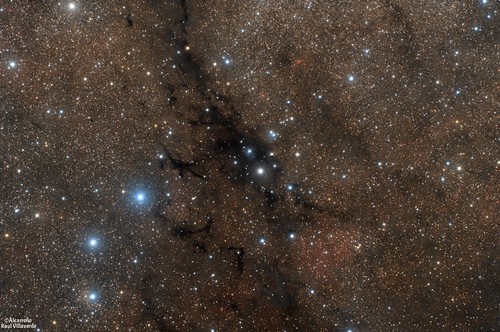 NGC 7031;LBN412;LBN409;LBN408;SH2-120;SH2-121;LDN 988;LDN 982;LDN981;LBN 408 by Raul Villaverde, en Flickr
NGC 7031;LBN412;LBN409;LBN408;SH2-120;SH2-121;LDN 988;LDN 982;LDN981;LBN 408 by Raul Villaverde, en Flickr
 NGC 7031;LBN412;LBN409;LBN408;SH2-120;SH2-121;LDN 988;LDN 982;LDN981;LBN 408 by Raul Villaverde, en Flickr
NGC 7031;LBN412;LBN409;LBN408;SH2-120;SH2-121;LDN 988;LDN 982;LDN981;LBN 408 by Raul Villaverde, en FlickrRe: Submissions: 2016 August
iridiscence and plane
moon and mercury
moon and mercury on the highway
